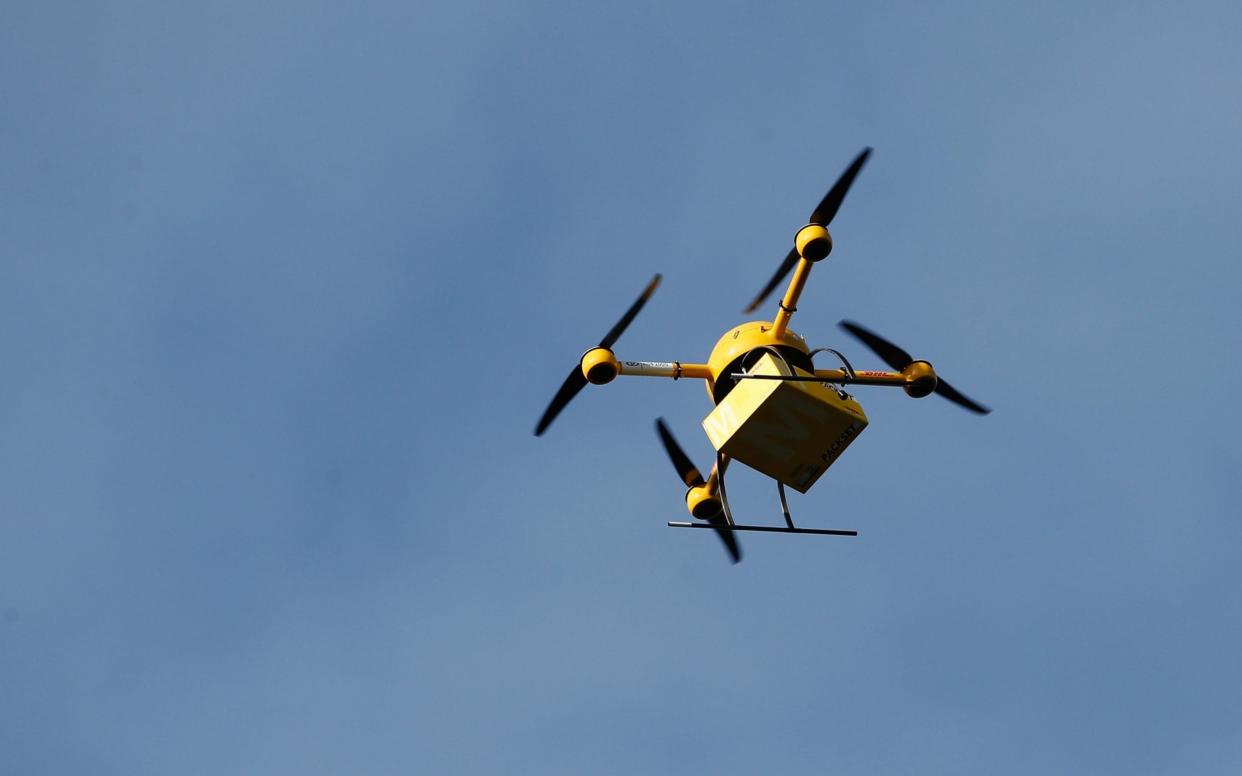Parcels cannot be delivered by air until drones fitted with anti-crash software, Civil Aviation Authority says

As the pre-Christmas present-buying frenzy reaches fever pitch, over 100 million parcels are expected to be delivered in the coming weeks. Yet, the approaching future where the expectant knock at the door is replaced by a phone alert that the delivery drone has landed, can only happen after new safety crash-prevention technology is developed, the Civil Aviation Authority (CAA) has said.
This week, the CAA published a document outlining that drones will need specialist software making them visible planes, air controllers and each other before they can be flown beyond the sight of human operators.
The regulator has also said delivery and commercial drones will need automated crash avoidance capabilities as standard, so they can detect and get out of the way of fast oncoming objects like planes and gliders.
Currently, drones are not allowed to be flown more than 500 meters away from the human behind the controls, unless by the emergency services in rare and exceptional circumstances. Drones can only be flown beyond the line of sight when the CAA gives specific permission, such as for commercial tests, and even then in designated temporary no fly zones.
These safety checks are currently grounding the mass adoption of commercial drones, for a wide range of uses such as parcel delivery and inspecting and monitoring building projects.
While drone technology is already capable of carrying parcels, Amazon carried out its first successful UK trials in 2016, the CAA warned the safety control systems needed to allow en masse commercial drones to take to the skies are not “sufficiently mature”.
The CAA said its document was a “roadmap” to drone companies showing what technologies they had to develop before commercial drones could become a reality.
Jonathan Nicholson, a CAA spokesman, said many drones already had the beginnings of the technology needed for en masse beyond-the-line-of-sight- flying, such as anti crash detectors.
However, he said these features needed to fit into a wider network, similar to commercial planes’ airborne collision avoidance systems, where drones become visible to and could see all other aircraft in their airspace.
Mr Nicholson said: “What we are saying is that if you want delivery drones, infrastructure inspection drones and all those things they all need to be part of the (air safety) infrastructure and integrate safely - this is how you achieve that.
“It needs to be a combination of the drones themselves sending out signals to be part of that system, the drones having the technology to separate from other thing, ramping the technology on other airspace users so they can fit into that system and building up ground infrastructure to support it.”

 Yahoo News
Yahoo News 
